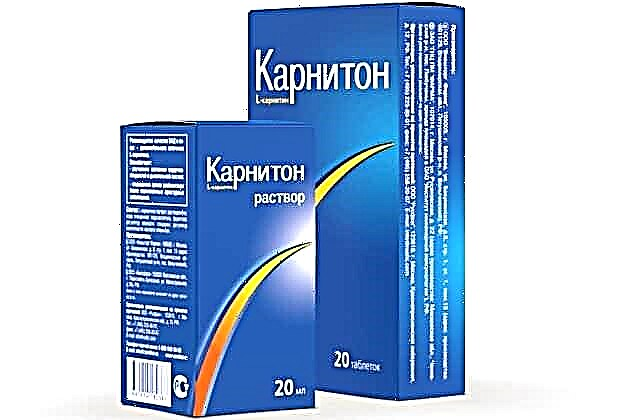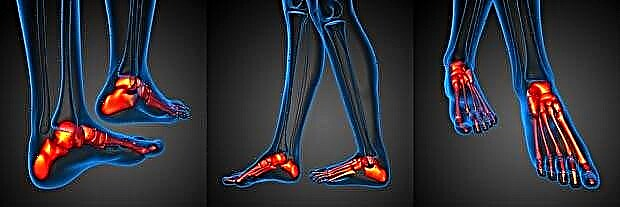Vietnam and Thailand are considered the homeland of the cereal. From there, about 6 thousand years ago, rice spread throughout Asia and India, and then came to Europe. As soon as white rice was not called in ancient times: "gift of the gods", "healing grain", "white gold". Hippocrates prepared a nutritious mixture from rice and honey for the ancient Olympians, Nero considered rice a remedy for all diseases, and Eastern merchants made their fortunes on the export of cereals.
Rice has become part of the culture of many peoples and remains the most popular food on the planet. Today we will talk about the properties of cereals, discuss the benefits and harm to the body.
Types of rice
There are 20 types of rice in the world, and in order to answer the question which is more useful, we will evaluate the cereal according to a number of criteria:
- Shape and size... Long-grain, medium, round-grain - these are the inscriptions we see on packs of rice in the supermarket. The longest grains reach 8 millimeters, and the size of a round one does not exceed five.
- Processing method. Unpolished, sanded, steamed. Brown (brown or unprocessed rice) are grains in a shell. The casing is removed by grinding and a white rice is obtained. Steamed is prepared from brown, with steam processing of grain, a translucent, golden-colored cereal is obtained, which is ground.
- Colour. Rice is white, brown, yellow, red, and even black.
We will not dwell on the description of rice varieties, we will only recall the names of the most popular: basmati, arborio, aquatica, jasmine, camolino, devzira, valencia... Each name hides an interesting history of the product, its features and options for use in cooking and medicine. But we will tell you about the properties of white rice, its composition and characteristics.

Composition of white rice
If you eat 100 grams of boiled white rice, you get a third of your daily carbohydrate intake. In terms of the content of complex carbohydrates, this cereal has few competitors: 100 g contains almost 79% of carbohydrate compounds.
Calorie content, BJU, vitamins
Let's also discuss the calorie content of rice: in a dry product - from 300 to 370 kcal (depending on the variety). But we, as consumers, are interested in an already processed product, and here the indicators are as follows: in 100 g of boiled cereal from 100 to 120 kcal.
Anyone who monitors their diet and controls the BJU will need the information:
| Nutritional value of boiled white rice (100g) | |
| Calorie content | 110-120 kcal |
| Protein | 2.2 g |
| Fats | 0.5 g |
| Carbohydrates | 25 g |
As for the chemical composition of cereals, it will not disappoint adherents of a healthy diet: phosphorus, potassium, magnesium, chlorine, iron, iodine, selenium - this is not a complete list of elements.
Rice is rich in vitamins, it contains:
- complex B, which helps the nervous system;
- vitamin E, a powerful antioxidant and activator of protein synthesis in the body;
- vitamin PP, or niacin, which restores lipid metabolism.

It is important to know: the cereal does not contain gluten (vegetable protein). Therefore, rice is suitable for children and adults with allergic reactions.
The list of vitamins and elements in the composition gives a general understanding of the benefits of the product: phosphorus activates mental activity, iron and potassium have a positive effect on the work of the cardiovascular system, vitamin E helps to accelerate metabolic processes, etc. We will tell you more about the beneficial properties and limitations later.
Attention! When converted from brown rice, white polished rice loses up to 85% of nutrients: vitamins, fiber, microelements. The value of cereals falls especially strongly from the loss of fat-soluble vitamins (A, E).
Rice on the diabetic menu
Of particular note is the inclusion of rice in the diet of diabetics. The product has a relatively high glycemic index (70). In addition, the process of digestion of rice, due to its ability to absorb liquid, slows down the digestion process. Experts recommend that patients with diabetes limit the consumption of polished white rice. The best option would be to add a small amount of this cereal to vegetable dishes or salads, or to completely replace it with brown and steamed cereals.
But there are exceptions: for example, unpolished long grain rice varieties basmati contains about 50 units of GI and does not cause a sharp change in glucose levels. This type can be used sparingly for food without health concerns.
The benefits of white rice
The rhythm of modern life and the changed food market make us choose the ingredients for our menu more carefully. We care about the health of loved ones, we want to maintain our physical shape, reduce the risks of heart attacks, which young people are also exposed to today. In this context, we will consider the use of white polished rice.
For weight loss
How effective is white rice for weight loss? Let's note the main factors that give the right to include rice in the diet of those who are losing weight: complex carbohydrates quickly saturate, and low calorie content helps to keep fit.
We remember that 100 g of boiled rice contains only about 120 kcal. Composing a menu with a calorie content in the range from 1200 to 1800 kcal, you can include a rice side dish or vegetable pilaf (150-200 g) in it. But the final calorie content of dishes depends on the cooking method and all other ingredients. For example, fried pork chop with boiled rice will not help you lose weight. Experts recommend drawing up nutritional programs by choosing simple and healthy ways of processing food: baking, boiling, steaming.
Important! When preparing cereals (grinding and removing useful shells), white rice loses biologically active substances, which are especially valuable in a sports diet. In fact, it turns into a piece of starch. And to reduce weight, it is better to replace it with more useful types of cereals - brown or black rice.
Rice is found in several popular diets. However, remember that mono diets have limitations and are not shown to everyone. A diet program based only on cooked rice will have a quick effect, but it may be short-lived.
Weight loss with white rice is not due to its beneficial properties, but due to the gross restriction of other substances in the diet: fats, protein, vitamins. Such experiments should be abandoned for any violations of the gastrointestinal tract, with increased physical exertion. For healthy people, fasting "rice" days and the inclusion of properly cooked white rice will bring benefits and visible effects. Especially if you combine food with walking, swimming, yoga or fitness.
For the prevention of heart disease, nervous system, etc.
In 100 g of rice there are almost 300 mg of potassium, which gives a reason to pay attention to the product for everyone who is susceptible to diseases of the cardiovascular system.
In addition to potassium, calcium and iron, useful for the work of the heart, rice has a unique property: it absorbs excess liquid and salt, which improves the condition of blood vessels, corrects kidney function, and relieves edema.
It is worth noting the positive effect of using rice in diseases of the nervous system: vitamins B, lecithin and tryptophan activate metabolic processes and strengthen nerves.
The benefits of rice for the prevention of Alzheimer's disease have been proven: the combination of vitamins and amino acids keeps the nervous system in good shape, activates mental activity and slows down the development of senile dementia.
Note that these benefits are relative. If the choice is between fried potatoes in lard and boiled white rice, then you should choose porridge. In all other cases, the benefits of eating parboiled rice, brown or black, will be much higher!
For the digestive tract
In case of stomach problems, it is worth adding mucous cereals to your diet. One of them is rice. Boiled glutinous rice is useful for people with gastritis or ulcers: porridge will create a soft shell on the walls of the esophagus, protect them from irritation.
In case of poisoning, indigestion (including infectious diseases), a rice diet will help to quickly normalize stools, cleanse the body of toxins, and restore intestinal microflora.
A cup of boiled rice with baked fish or lean meat will not only be a full meal, but also help cleanse your intestines. But remember the rules for preparing the product, try to correctly combine the ingredients in your dishes and not overeat.
Harm of white rice and contraindications for consumption
Along with the benefits, white polished rice can bring harm to the body. Consider the cases in which you should refrain from eating cereals:
- Obesity. For patients with a high degree of obesity, the diet is made up by specialists. Self-directed attempts to lose weight with a rice diet can lead to serious hormonal imbalances, alter bowel movements and exacerbate the problem. For this reason, white milled rice is included in the diet of obese patients only in doses recommended by the doctor.
- Gastrointestinal problems... Constipation cannot be cured with rice. On the contrary, the product's ability to absorb moisture will lead to additional problems.
- Atherosclerosis and kidney disease... Excessive consumption of rice leads to the formation of kidney stones and blockage of blood vessels. Therefore, in case of problems with the kidneys and blood vessels, it is worth limiting the use of high-calorie polished rice, reducing the amount of servings and excluding fatty pilaf, paellas, side dishes with roasted sauces from the menu.
Conclusion
To summarize, white rice is healthier than lard-fried potatoes. It rarely causes allergies and is good for diarrhea. However, in terms of its composition, it is an ordinary starch with a minimum amount of vitamins and microelements. Weight loss on rice diets is traumatic for the body and leads to a lack of vitamins and trace elements. If you choose cereals for a healthy diet for a long time, give preference to steamed, brown or black rice. They contain more slow carbs and are significantly healthier.









